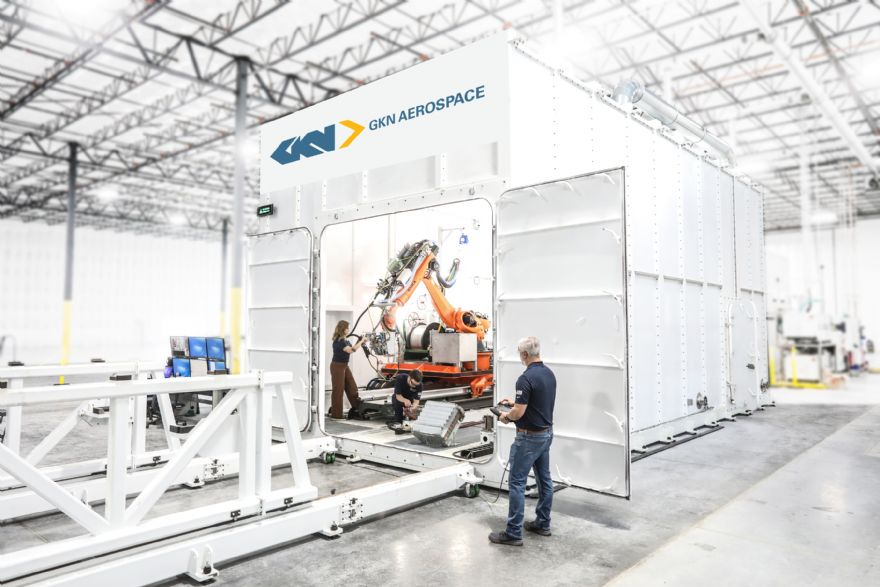 GKN Aerospace
GKN Aerospace has commissioned the world’s largest known laser-directed energy deposition additive manufacturing (AM) cell at its new US-based Global Technology Centre in Texas. Cell 3 is seen as the next step in pushing the boundaries of large-scale additive manufacturing of titanium aircraft structures through the process of laser metal deposition with wire (LMD-w).
Shawn Black, GKN Aerospace’s president of defence, said: “Cell 3 will create opportunities to deliver a whole new level of additively manufactured (AM) titanium components to sizes needed for safety-critical air and space structures. We are very excited to bring this new equipment to our current line of product development LMD-w cells. This will accelerate the introduction of our technology into production while helping to support the US supply chain and reducing reliance on foreign-sourced materials.”
GKN Aerospace has been at the forefront of LMD-w technology for two decades, beginning with its world leading aero-engine systems business.
Mr Black continued: “LMD-w is a game-changer and a more sustainable alternative for production in a wide range of civil and defence structures. The method has shown its proficiencies in producing components faster and with significantly reduced lead times. We also look forward to expanding this technology’s role in sustainability and efficiencies through additional collaborations with customers and universities.”
In 2022, GKN Aerospace unveiled a 2.5m milestone titanium structure developed in Cell 2. The new cell will enable the development of 5m titanium components using the LMD-w process. GKN Aerospace’s Cell 3 features include: 20KW laser; up to 10-axes of motion; large area inert environment; 5.6 x 2.5m maximum substrate sized; and two-sided or rotary deposition.
GKN Aerospace already has AM components flying on several different major platforms, across the commercial, military, rotorcraft, business jet and space markets. Future collaborations of AM for large-scale aerostructures will include: process improvement; modelling and simulation; non-destructive evaluation methods; in-situ monitoring' and the transition of technology development into production solutions.